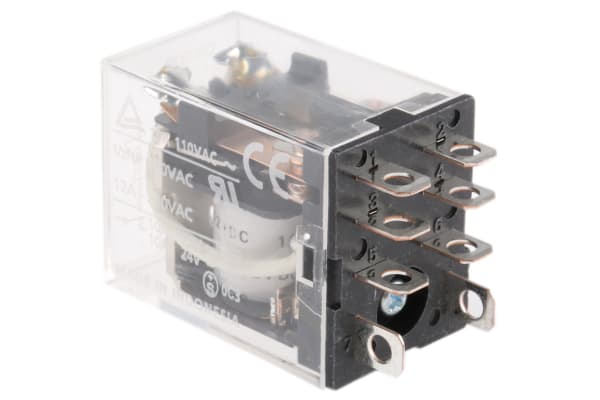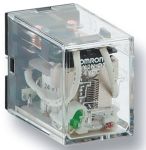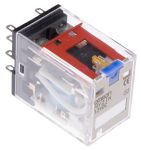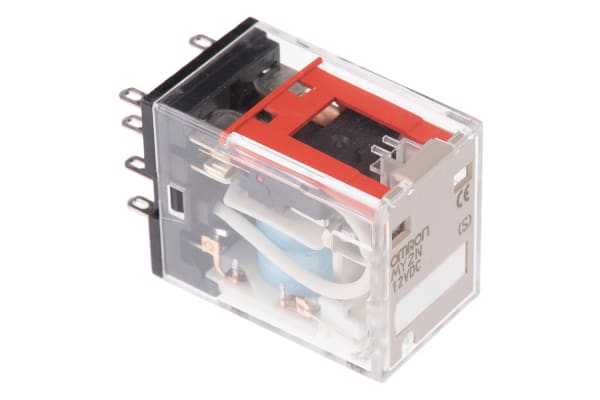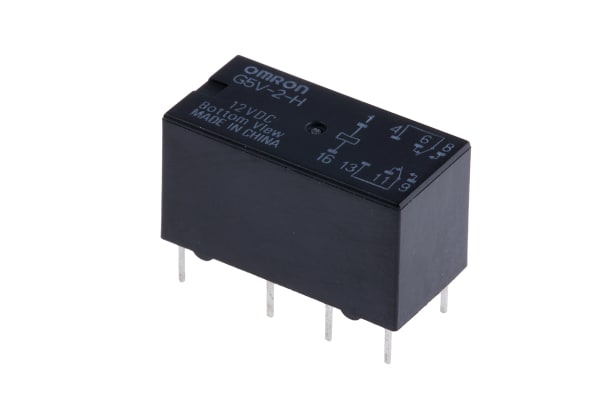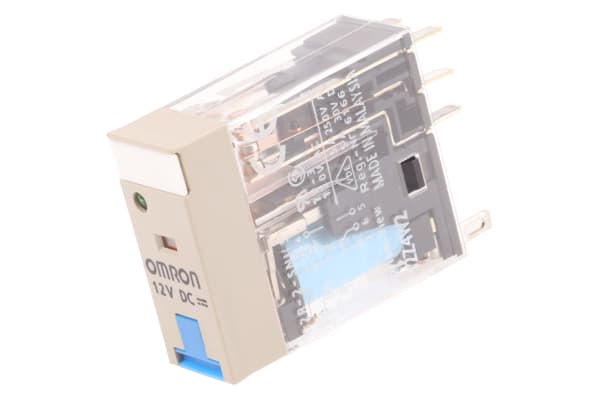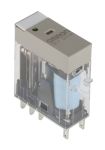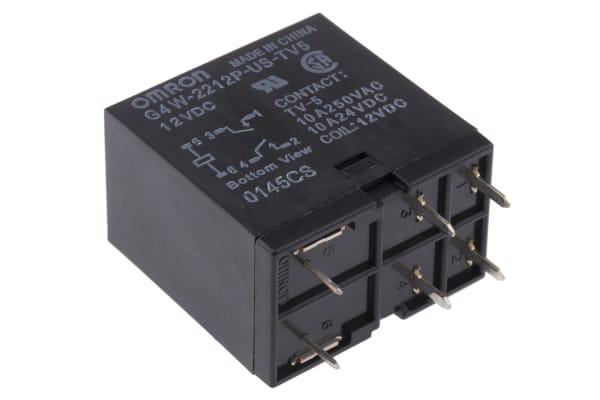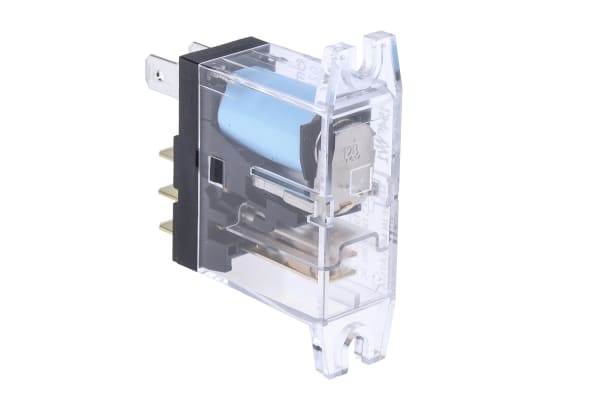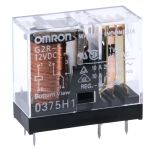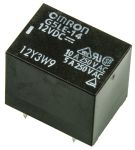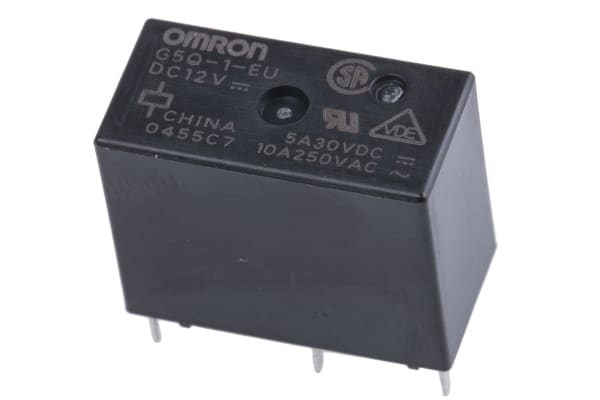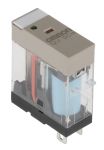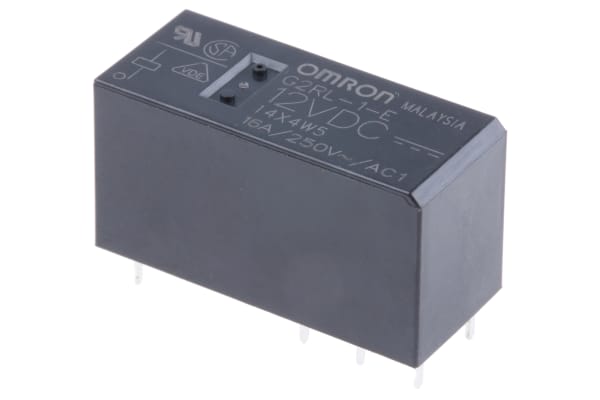Non-Latching Relays
Relays are electrical switches that are operated by electrical impulses with the primary function to open and close a circuit, they can also be referred to as industrial switches. There are 2 main types available, latching and non–latching relays.How do non-latching relays work?Non-latching relays are in a normally closed (NC) position and will stay in this state without power. When power passes through the circuit, the relay switched to a normally open (NO) position by using an internal coil to generate a magnetic force, holding this NO position. Once the current is turned off, it returns to the NC position. This makes non-latching relays well suited to push-button applications like keyboards and micro-controller input buttons.What are non-latching relays used for?Non-latching relays are highly durable and versatile components, making their performance long lasting and suitable for use in a wide range of applications, such as:Automotive enginesHousehold appliancesIndustrial machineryMedical equipmentTelecommunications equipmentWhat is the difference between latching and non-latching relays?Both types of relays in similar in design and function, however, a significant difference between them is that a latching relay will remain in the last position it when it was last powered, whereas a non-latching goes back to its normal position. This makes each more type of relay suitable for different applications. Considerations when selecting a relayWhen choosing a relay, it is important to consider a number of specifications to ensure it is fit for purpose, some factors include:Coil voltage – the required voltage to actuate the switching mechanism. If a voltage is too high this could damage the components, if it is too low then it will not actuate. Contact configuration – This is the state the contacts are in without power. For example SPST, single pole single throw.Contact material – the relay contacts are available in many materials that have certain properties. Common materials are gold, silver, tin oxide and nickel Coil power – the amount of power (watts) the coil operates at. This must match the power in the circuit for correct function. Coil resistance – the amount of resistance (ohms) in the circuit that the coil creates.
-
Omron, 12V dc Coil Non-Latching Relay DPDT, 10A Switching Current Plug In, 2 Pole, LY2 12DC
IDR175,376.08 -
Omron, 12V dc Coil Non-Latching Relay DPDT, 10A Switching Current Plug In, 2 Pole, LY2N-DC12
IDR230,023.77 -
Omron, 12V dc Coil Non-Latching Relay DPDT, 10A Switching Current Plug In, 2 Pole, MKS2PI DC12
IDR190,375.35 -
Omron, 12V dc Coil Non-Latching Relay DPDT, 10A Switching Current Plug In, 2 Pole, MY2IN 12DC(S)
IDR149,678.03 -
Omron, 12V dc Coil Non-Latching Relay DPDT, 10A Switching Current Plug In, 2 Pole, MY2N 12DC(S)
IDR205,374.62 -
Omron, 12V dc Coil Non-Latching Relay DPDT, 10A Switching Current Plug In, 2 Pole, MY2N-D2 12DC(S)
IDR223,730.37 -
Omron, 12V dc Coil Non-Latching Relay DPDT, 1A Switching Current PCB Mount, 2 Pole, G6K2F12DC
IDR67,863.83 -
Omron, 12V dc Coil Non-Latching Relay DPDT, 2A Switching Current PCB Mount, 2 Pole, G5V-2 12DC
IDR37,026.17 -
Omron, 12V dc Coil Non-Latching Relay DPDT, 2A Switching Current PCB Mount, 2 Pole, G5V-2-H 12DC
IDR70,590.97 -
Omron, 12V dc Coil Non-Latching Relay DPDT, 5A Switching Current PCB Mount, 2 Pole, G2R-2 12DC
IDR50,032.53 -
Omron, 12V dc Coil Non-Latching Relay DPDT, 5A Switching Current PCB Mount, 2 Pole, G2R2SNIDC12(S)
IDR172,229.38 -
Omron, 12V dc Coil Non-Latching Relay DPDT, 5A Switching Current Plug In, 2 Pole, G2R-2-SN 12DC(S)
IDR122,406.63 -
Omron, 12V dc Coil Non-Latching Relay DPNO, 10A Switching Current PCB Mount, 2 Pole, G4W-2212P-US-TV5 12DC
IDR89,576.06 -
Omron, 12V dc Coil Non-Latching Relay DPNO, 25A Switching Current Panel Mount, 2 Pole, G7L-2A-T 12DC
IDR196,039.41 -
Omron, 12V dc Coil Non-Latching Relay SPDT, 10A Switching Current Panel Mount Single Pole, G2R-1-T DC12
IDR69,542.07 -
Omron, 12V dc Coil Non-Latching Relay SPDT, 10A Switching Current PCB Mount Single Pole, G2R-1 12DC
IDR67,024.71 -
Omron, 12V dc Coil Non-Latching Relay SPDT, 10A Switching Current PCB Mount Single Pole, G2R-1-SNDI DC12(S)
IDR196,563.86 -
Omron, 12V dc Coil Non-Latching Relay SPDT, 10A Switching Current PCB Mount Single Pole, G2R1SNIDC12(S)
IDR139,084.14 -
Omron, 12V dc Coil Non-Latching Relay SPDT, 10A Switching Current PCB Mount Single Pole, G5LE-14 12DC
IDR18,670.42 -
Omron, 12V dc Coil Non-Latching Relay SPDT, 10A Switching Current PCB Mount Single Pole, G5Q-1-EU 12DC
IDR26,327.39 -
Omron, 12V dc Coil Non-Latching Relay SPDT, 10A Switching Current Plug In Single Pole, G2R-1-SN 12DC(S)
IDR118,315.92 -
Omron, 12V dc Coil Non-Latching Relay SPDT, 16A Switching Current PCB Mount Single Pole, G2RL-1-E 12DC
IDR54,542.80 -
Omron, 12V dc Coil Non-Latching Relay SPDT, 1A Switching Current PCB Mount Single Pole, G5V-1 12DC
IDR30,103.43 -
Omron, 12V dc Coil Non-Latching Relay SPDT, 3A Switching Current PCB Mount Single Pole, G6E-134P-US 12DC
IDR116,008.34



